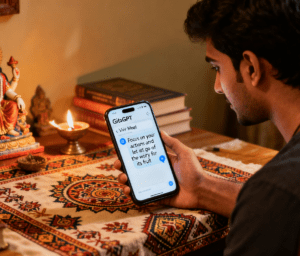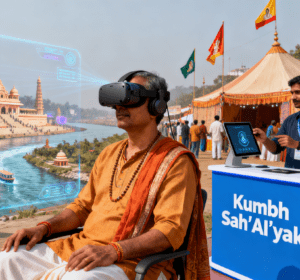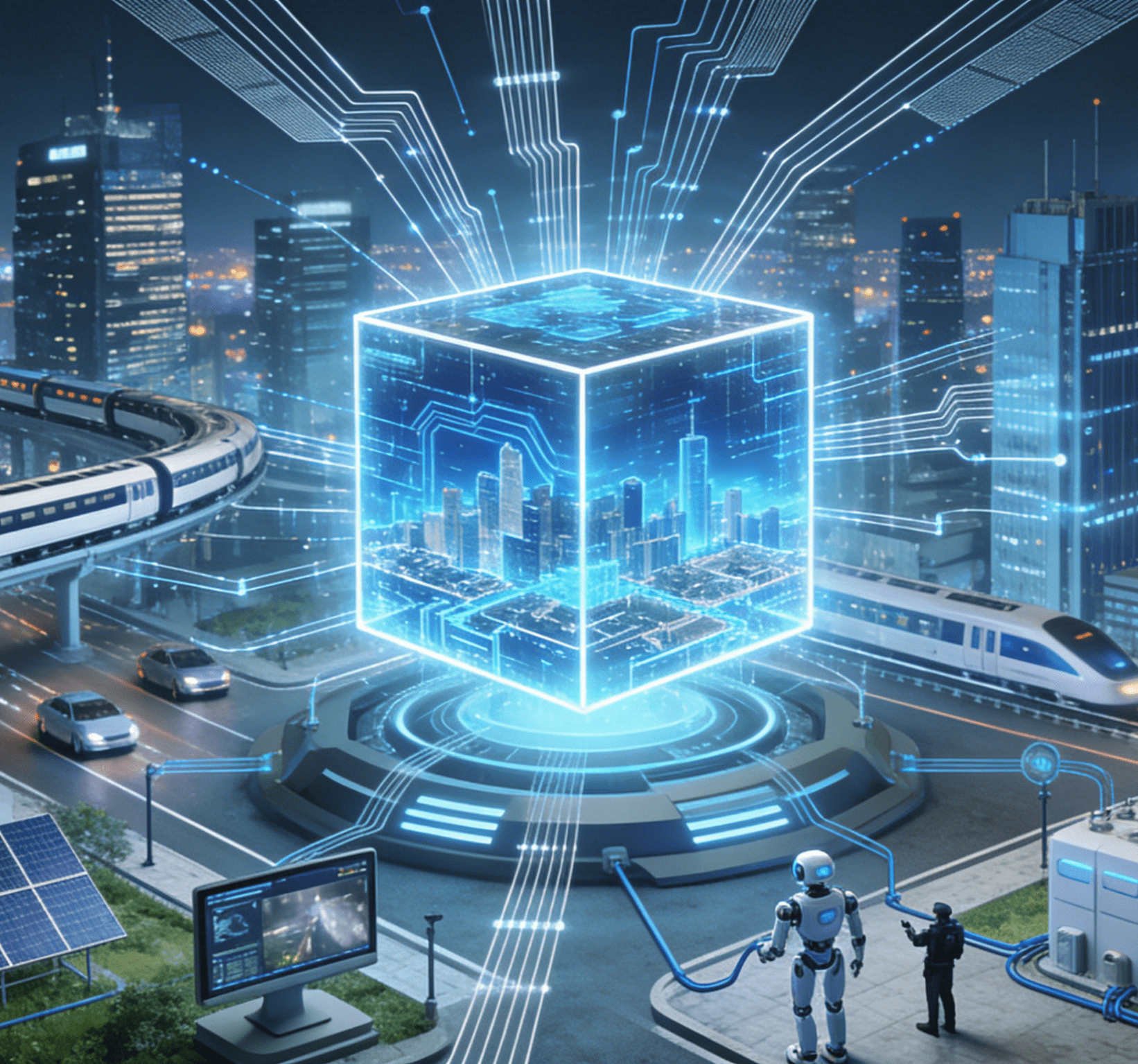
A Lifeline in the Palm: Vijay Meel and the Rise of AI Spiritual Confidants
In a small room in Rajasthan, India, 25-year-old student Vijay Meel stares at his phone screen, fingers hovering over the keyboard. He’s not texting a friend or scrolling for exam tips—he’s reaching out to “God.” Months after failing his banking exams, Meel, who once sought solace in spiritual leaders, has turned to GitaGPT: an AI chatbot trained on the Bhagavad Gita, Hinduism’s sacred 700-verse text, which speaks in the voice of the deity Krishna. When he typed in his despair, the chatbot replied, “Focus on your actions and let go of the worry for its fruit.” For Meel, the words weren’t just a quote from a holy book—they were a lifeline.
This use of AI feels a world away from its more familiar industrial roles—think of how algorithms fine-tune a Машина для сборки стопора вращения in automotive plants, for example. These machines, which align and secure rotating components (like axle parts) during assembly, rely on AI to adjust their rotational stop positions in real time, ensuring each part locks into place with 0.01mm precision and slashing assembly errors by 40%. But here, in Meel’s hands, AI’s purpose has softened: no longer just optimizing mechanical processes, it’s now a sounding board for human doubt and devotion.
Faced with the chaos of modern life—disconnection from community, the speed of change, the scarcity of trusted spiritual mentors—Meel isn’t alone. “It wasn’t a saying I was unaware of, but at that point, I needed someone to reiterate it to me,” he says of GitaGPT’s advice, which has since become a weekly confidant.
Tanmay Shresth, a 23-year-old IT worker in New Delhi, uses a similar Krishna-focused bot for existential conversations he can’t easily have with others. “AI is non-judgmental, accessible, and yields thoughtful responses,” he explains.
This quiet, intimate reliance on AI is the face of a broader global shift: chatbots are no longer just tools for work or entertainment—they’re becoming new spiritual middlemen.

Beyond Hinduism: A Global Wave of AI-Driven Spiritual Practice
This fusion of faith and technology isn’t limited to India. From the Americas to the Middle East, worshippers of all major religions are turning to purpose-built AI for worship and guidance.
In 2023, Text With Jesus—an app letting users chat with AI versions of biblical figures—drew accusations of blasphemy, while QuranGPT crashed within a day of launch due to overwhelming traffic. There are AI chatbots for Confucius, the German theologian Martin Luther, and even the 20th-century Hindu sage Ramana Maharshi (whose bot has logged 35,000 interactions on Chatacter.AI). Former Google engineer Anthony Levandowski even founded Way of the Future, a religion centered on developing an “AI god.”
Yet Hinduism’s relationship with these tools is uniquely rooted in its traditions. For centuries, Hindus have venerated murtis (sacred statues believed to house divine energy) and practiced darshan (the act of “seeing and being seen” by the divine). To many believers, AI chatbots or virtual deities aren’t a rejection of this heritage—they’re a new form of it.
“What shows up in the news as robotic Krishnas or chatbots is often treated as a cute novelty,” says Holly Walters, a Wellesley College anthropologist who studies South Asian spirituality. “But it’s far beyond novelty. People feel disconnected from temples, from elders—talking to an AI about God is a way of reaching for belonging, not just spirituality.”
Institutional Embrace: From Apps to Pilgrimages, AI Redefines Sacred Practice
Major spiritual institutions are now leaning into this shift, integrating AI into longstanding traditions.
In early 2025, Sadhguru—founder of the influential Isha Foundation—launched the “Miracle of Mind” app, which uses AI to distill 35 years of his teachings into personalized daily guidance. It crossed 1 million downloads in just 15 hours.
Later that year, the Maha Kumbh Mela—India’s massive Hindu pilgrimage, often called the world’s largest religious gathering—deployed AI tools like Kumbh Sah’AI’yak (a multilingual chatbot for travel and accommodation help) and a Digital Mahakumbh Experience Centre, where virtual reality brought mythological stories to life. Devotees unable to attend sent photos to be dipped in the sacred Triveni Sangam waters via video; others joined “digital darshan” calls with relatives on-site.
AI is even reshaping spiritual research: a 2022 study used a large language model to compare the Bhagavad Gita and the Upanishads (ancient Hindu scriptures), finding a 73% similarity in their themes—confirming decades of scholarly work while uncovering subtle patterns missed by manual reading.
Walters was right when she said AI’s seep into religion is inevitable: it’s already here. These tools don’t “replace” God or dilute faith—they’re new bridges between ancient wisdom and modern life, between loneliness and connection.
As technology and faith keep weaving together, the question won’t be whether we talk to God via AI, but how these conversations redefine belief: not as something static, tied to old forms, but as something living—able to adapt, to meet people where they are, one chat, one prayer, one digital darshan at a time.
What benefits does artificial intelligence bring to component assembly machines?




















